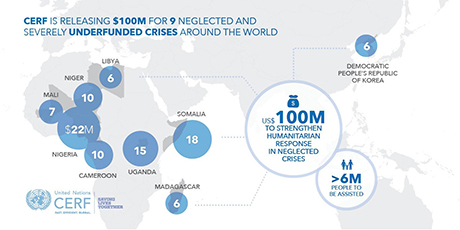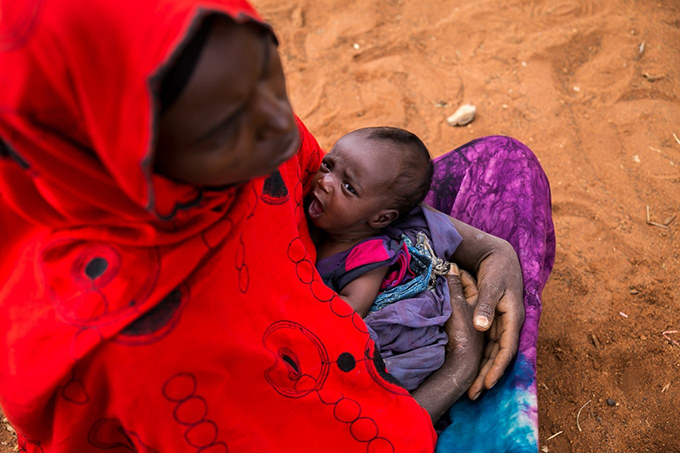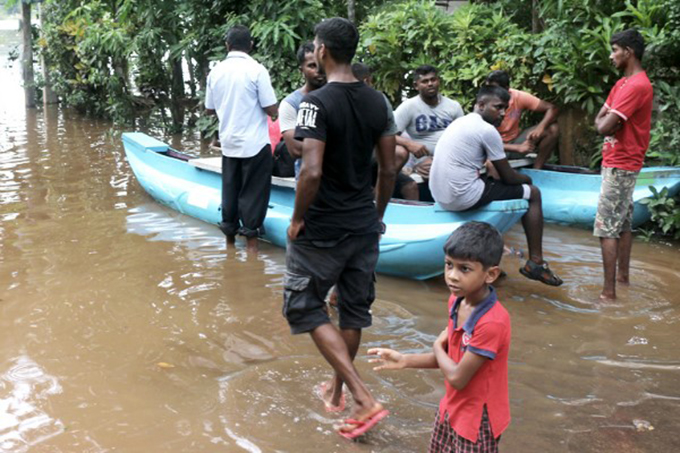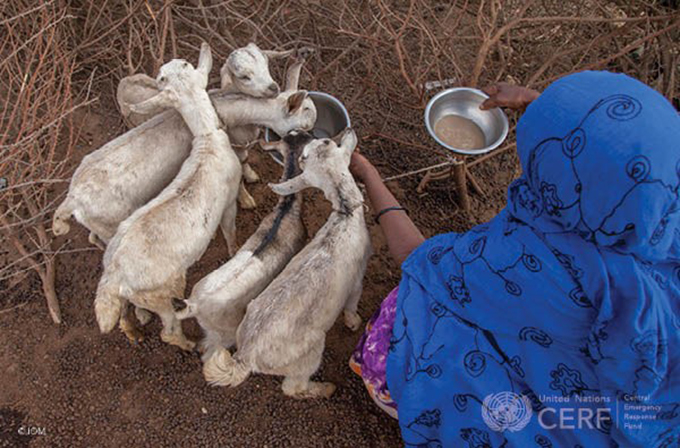Ireland’s funding to the UN Central Emergency Response Fund reaches €22 million in 2017
21/8/17
Image Credit: OCHA/G Connell
In response to overwhelming levels of humanitarian suffering across the globe, Ireland has given an extra €9 million in funding to one of our key humanitarian partners - the UN Central Emergency Response Fund (CERF). This new contribution brings our total support to the CERF to €22 million this year alone and shows Ireland’s strong commitment to saving lives through humanitarian assistance.

Credit: OCHA/G.Connell
The CERF is a large UN fund that speedily responds when crisis strikes or when an ongoing crisis suddenly worsens. The CERF also makes sure that people caught in crises that no longer make the headlines are not forgotten. Already in 2017, CERF has given $298 million to help people in 28 humanitarian crises around the world. This money allows urgent aid to be provided to the men, women and children affected by crisis, ultimately saving lives.
Large-scale global humanitarian need
In 2017, a staggering $23.5 billion is needed to help over 100 million people worldwide. Conflict in South Sudan, Syria and Yemen continues to cause intense suffering. Fighting in Iraq and Afghanistan has completely destroyed houses, schools and hospitals. As many as 20 million of people in the world today are facing hunger so extreme that they are on the brink of famine. In Yemen, cholera – which is an entirely preventable disease - is devastating a war-torn and very poor population.
There are also many crises that we hear little about in the media. New outbreaks of violence in the Democratic Republic of Congo and Central African Republic this year have caused already terrible humanitarian situations to worsen. Sudden devastation has been caused by drought in Kenya, Tropical Cyclones in Madagascar and Mozambique, and flooding in Peru.
With no easy solutions to these many humanitarian crises, the international community must make sure the CERF can continue to respond. Ireland has continually supported the CERF to provide lifesaving assistance to people affected by crisis. Proudly, we are the eighth largest donor to the CERF since it was set up in 2005.
Kick-starting humanitarian response in emergencies
In sudden emergencies or when an ongoing crisis rapidly worsens, the CERF is one of the fastest ways to get urgent aid to where it is needed most. For example, the CERF has been one of the quickest and largest supporters of early humanitarian action in response to the drought, floods and cyclones linked to the El Niño weather phenomenon.
In February this year the CERF provided $18.5 million for early response to the new drought in Ethiopia. The country was still reeling from the devastating effects of a 2015-2016 El Niño drought when rains failed again. CERF funding provided timely aid to more than 785,000 people suffering from hunger, malnutrition and severe water shortages in the worst-hit Somali region.

Credit: AP Photo/Mulugeta/Ayene
In late May, heavy monsoon rains caused widespread flooding and mudslides in Sri Lanka. The rains caused the death of over 200 people and homes, clinics, schools, roads and water systems were swept away, leaving many without access to clean water or adequate sanitation facilities. The CERF quickly responded, giving $4 million for life-saving shelter, health and food assistance for 120,000 people in the worst affected areas.

Responding to the threat of famine
In north-east Nigeria, Somalia, South Sudan and Yemen millions of people are facing extreme hunger. So far this year CERF funding of $128 million is helping bring people back from the brink of famine and avoid total humanitarian catastrophe in these countries.

For example in South Sudan, where famine has already hit earlier this year and conflict continues to drive extreme hunger, the CERF is responding. $15.5 million in CERF funding is supporting urgent humanitarian assistance in areas where famine has occurred or a high risk of famine exists, helping some 369,000 people in the worst affected areas.

Credit: OCHA/G.Connell
Leaving no-one behind
When a crisis fades from the headlines, or never makes the headlines, it is very difficult to raise the funding needed to help - even where there are huge humanitarian needs. The largest single amount of funding given by the CERF so far this year of $100 million is supporting response to humanitarian needs in nine of the worlds most neglected and underfunded crises.

Credit: UNICEF/Alexis Huguet
This funding aims to reach 6 million people with life-saving relief in emergencies where humanitarian suffering is alarmingly high, but available resources are critically low, such as Cameroon, the Democratic People’s Republic of Korea (DPRK), Libya, Madagascar, Mali, Niger, Nigeria, Somalia and Uganda. Much of this funding will also help people who have been forced to flee their homes. Displacement is one of the most pressing humanitarian challenges today, with some 65 million people worldwide forcefully displaced.

